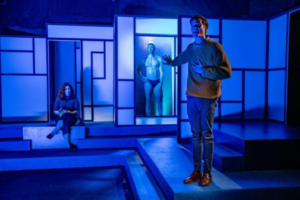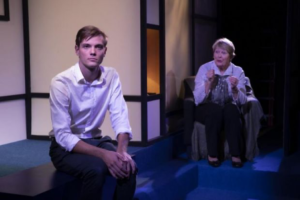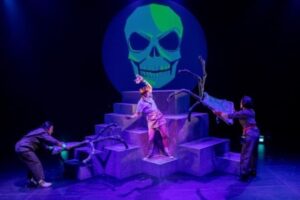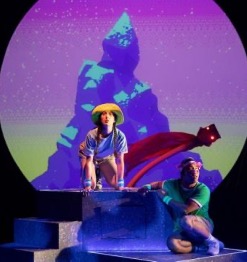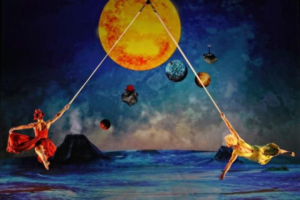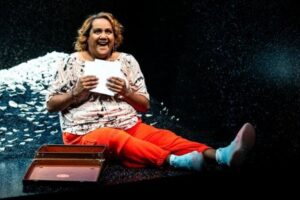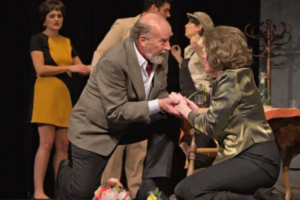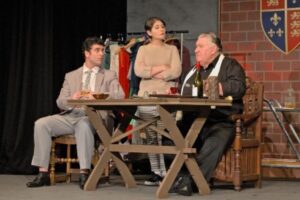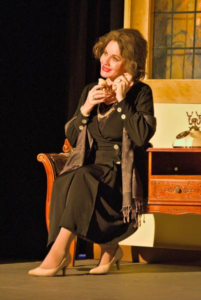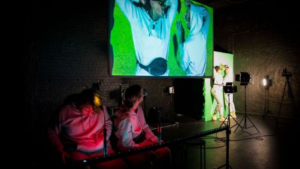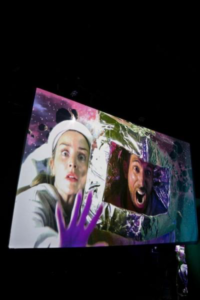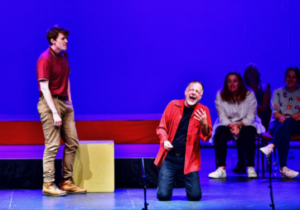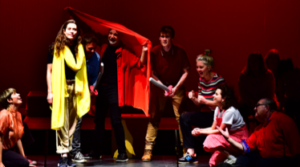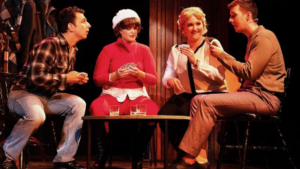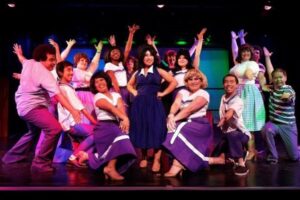Book, music & lyrics by Irene Sankoff and David Hein. Director: Christopher Ashley. Musical Director: Luke Hunter. Musical Staging: Kelly Devine. Junkyard Productions & Rodney Rigby Production. Capitol Theatre, Sydney. Opening Night – June 10, 2021
Reviewed : June 10, 2021
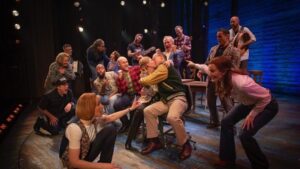
How hard it is to write about this wonderful production after so much has been said and written already – and everything you’ve heard or read is right! It is warm and poignant. It is fast and funny. It is both celebratory and commemorative. It is, indeed, what good verbatim theatre should be – real stories sensitively translated into a theatrical form that reminds us of the truths that need to be documented about humanity … at its worst, and its very best.
The production celebrates the wonderfully warm-hearted reaction of the people of Gander, Newfoundland, who took in so many unexpected and confused travellers re-routed to Gander because of the horrific attacks on New York and Washington on 11th September 2001. It is, therefore, also an effectively haunting reminder of that event and its lasting consequences. And it does so in the way humankind has used so effectively for thousands of years: storytelling.
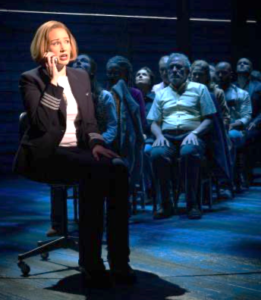
Irene Sankoff and David Hein have used the 1600 stories they gathered from the people involved to weave an intricate re-telling of the way the residents of a little town reacted to the arrival of 7000 people from different parts of the world. People who were frightened, perplexed, traumatised. People who needed food, shelter, warm clothes … and toothbrushes.
It recounts the initial disbelief at the magnitude of the task that confronted them – and the incredible ways they surmounted every seeming impossibility.
Come From Away is a story about the wonderful humanity of man – but it doesn’t shirk its fallibility. It is remarkably honest in its re-telling of the stories and the people who told them. It is even more remarkable that Sankoff and Hein were able to use music and dance to enhance the re-telling with tempos that evoked the disparate emotions that interleave every carefully recaptured experience. That they chose the instruments that pay homage to the early settlers who made Newfoundland their home – the mandolin, whistles, Irish flute, uilleann pipes, fiddle, bodhran drum – meant they were able to incorporate a wide range of rhythms and emotions, from the foot-tapping introduction to the folk from Gander in “Welcome to the Rock”, to the tender distress of “I am Here”, where a displaced mother cries out to her fire fighter son, lost somewhere in the dust and debris of New York.
There are so many other ways this skilled pair of writers have encapsulated the chaos of those few days. The use of only twelve performers to depict both townspeople and travellers was a significant decision. The different characters each one plays are remarkably clear. The carefully choreographed and rehearsed changeover of characters also gives the impression of the pace and turmoil of the situation.
The minimalist set – a revolve, chairs and some tables – means that the cast can be sitting in a plane at one moment, arguing around a table in the mayor’s office at the next, or dancing on an almost empty stage at another. Not one story is hampered by anything that obstructs the characters or each nuance of the continuing story, even though that nuance may, at first, be a little hard to pick up due to the unusual Newfoundland accent – and the accents of some of the travellers.
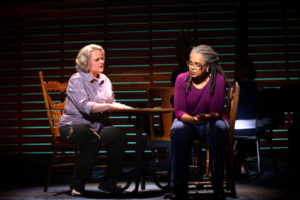
That attention to detail is an important part of this production – and any piece of verbatim theatre. It is a record of an important event. In this case, an event that, because of an attack that happened somewhere else, two groups of very different people were thrown together and something wonderful occurred. It was up to Sankoff and Hein to make this into a theatrical experience without losing the cathartic effect of the story. Staying true to accents and the cultures of the people involved was one way. Incorporating their music, religions and backgrounds was another. Finding a director who could ensure those truths is yet one more – and essential. Christopher Ashley is such a director.
Ashley ensured that every one of the twelve talented performers – and each of the seven standby cast – in this production is true to every character they portray. Whether playing a baffled passenger or harried townsperson, there is truth and strength in every portrayal – and they radiate a great sense of unity and harmony. To pull this show off the cast must be incredibly talented, organised, energetic and dedicated – and the director must be able to envision the compelling complexities that Sankoff and Hein have instilled into their writing. Ashley and this wonderful cast do just that.
First published in Stage Whispers magazine.
